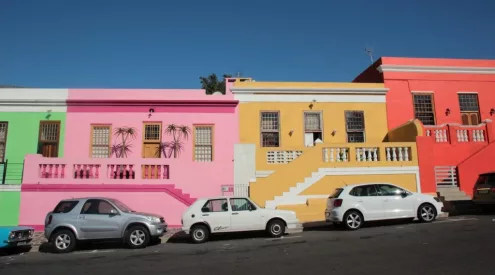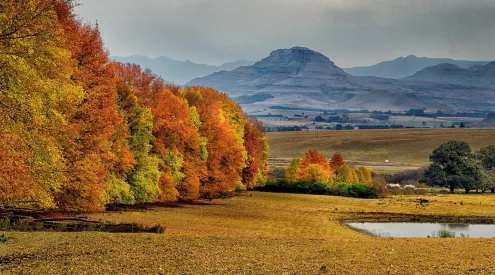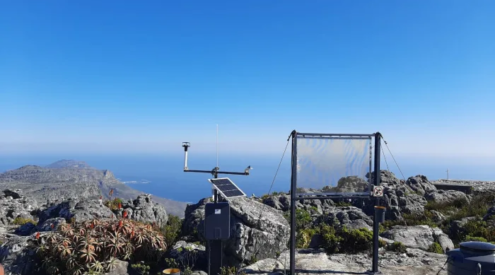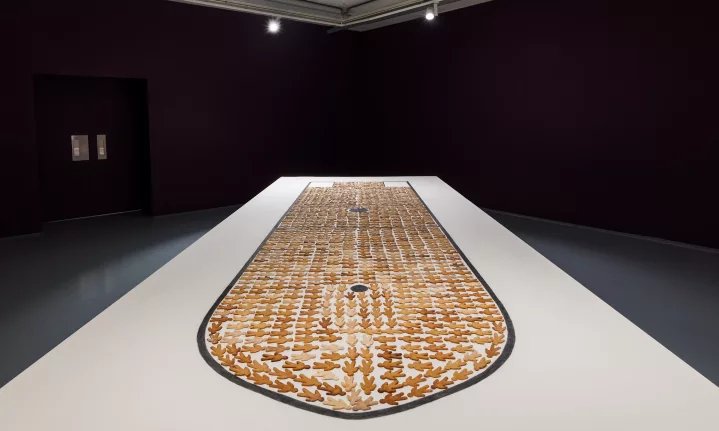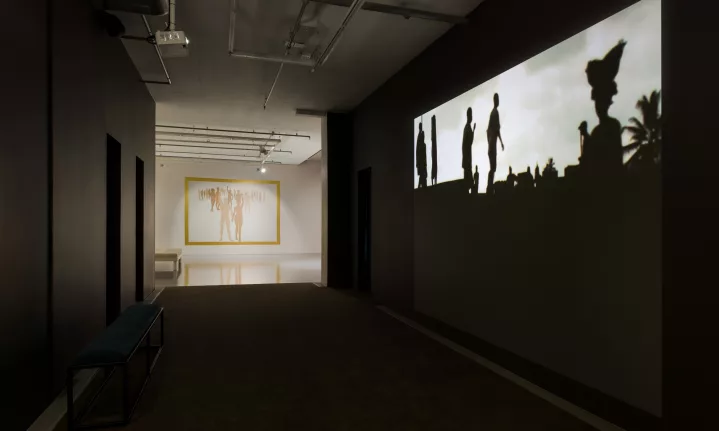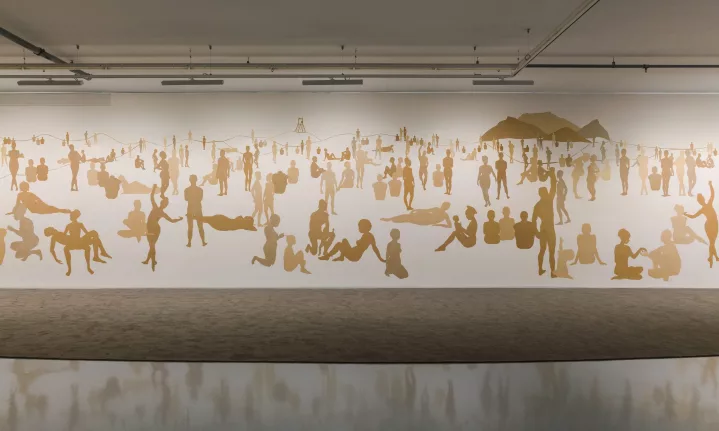Gilt, a thought-provoking exhibition at the Zeitz Museum of Contemporary Art Africa (Zeitz MOCAA) by Nigerian Born, British artist, Mary Evans, showcases the adversity and strength of black people throughout history.
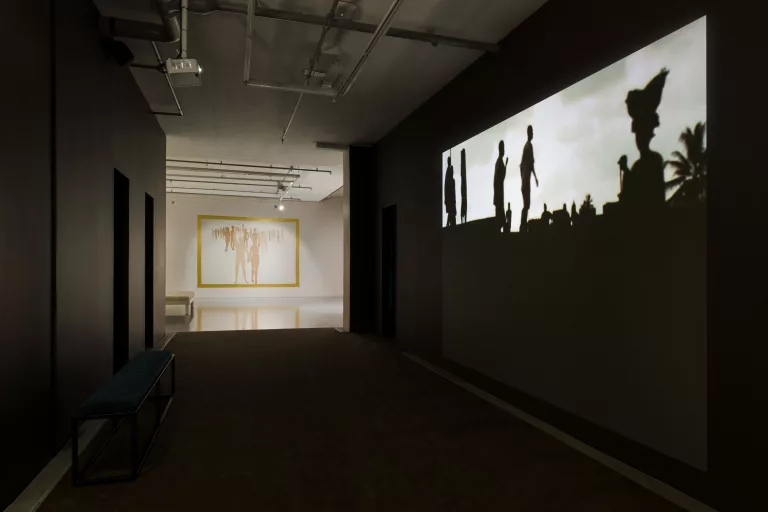
Along with delving deep into the history and psychogeography of specific cultural and heritage sites in Cape Town, Evans, known for her masterful use of craft paper and disposable materials, explores themes of place, belonging, and the narratives of Black resilience.
Raised in the United Kingdom, Evans draws upon the socio-political and historical frames of the diaspora, migration, and global exchange to reflect upon the enduring stories of Black individuals. Her cross-cultural discourse merges methods of image production, blurring the boundaries between “fine art” and “craft,” decoration, and ornament.
The exhibition title cleverly plays with the words “gilt” and “guilt,” evoking notions of both opulence and the lingering consequences of surviving historical wounds such as slavery, colonialism, apartheid, and late-stage capitalism, as experienced by the Black community.
Evans’ iconic life-sized silhouettes take centre stage in her artistic practice, serving as powerful symbols in her narratives. These silhouetted figures, presented in large-scale “history paintings,” provide viewers with an entryway into Evans’ work, counteracting difficult Black histories.
Placed against monochromatic landscapes, the figures of varying shades of brown reference colonial entanglements and offer a humanistic reading of the Black figure as a representation of all bodies. Evans’ deliberate choice of paper-based and disposable materials serves as a poignant commentary on the treatment of the Black body throughout history – cheap, shipped, broken, disposed of, and feared.
‘I didn’t only want to showcase the history of black people as one of struggle, but also as one of Jubilee,’ Evans said over a phone call.
A centrepiece of the exhibition is a piece titled Vista, which spreads across the longest wall in the gallery. Individuals can be seen in the backdrop of Table Mountain braiding hair and dancing
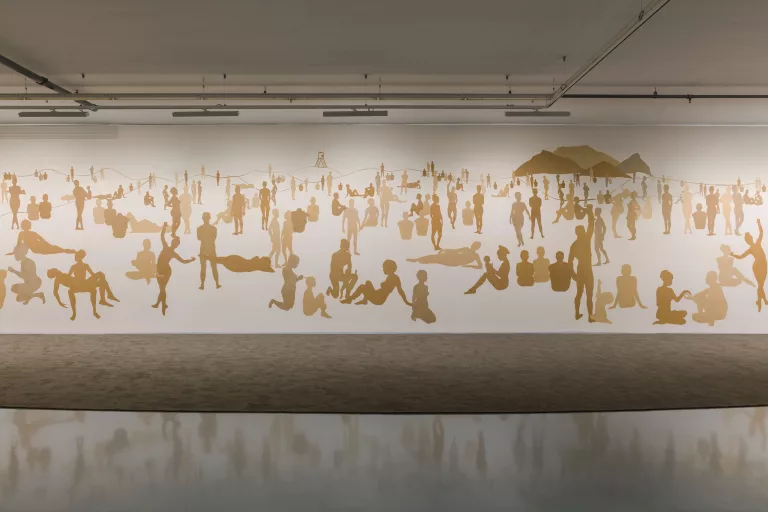
‘I was thinking of the Khoi and the San and what it was like before Europeans set foot on the land. I kept thinking things like, “What did the Western Cape look like in Krotoa’s time?”‘
A visceral and evocative installation in the exhibition is Gingerbread. A large table in the centre of the room depicts the sketch often seen in history books of a how slave ship was packed to transport Africans across the ocean during the middle passage.
Within the sketch of the ship, gingerbread biscuits take the place of human bodies. The ingredients used to make these biscuits are the same commodities that slaves needed to grow in the new world and just like these baking ingredients, Africans were viewed as a commodities.
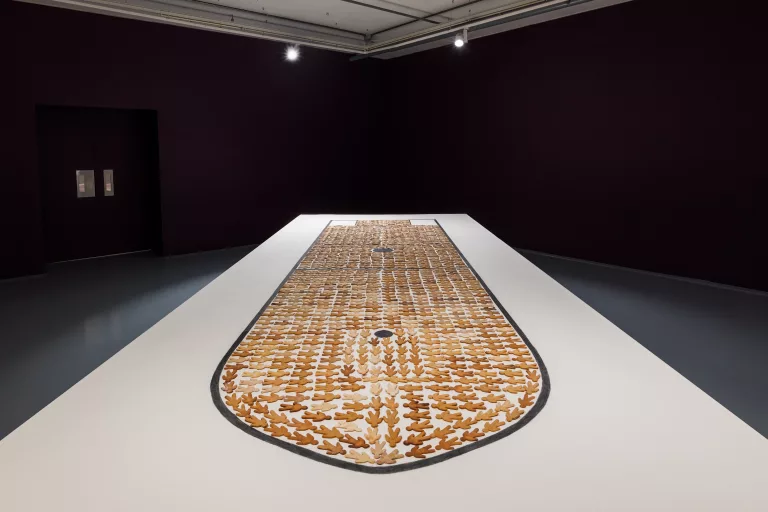
Gingerbread
Gingerbread also denotes the way in which black bodies are seen as disposable. As Evans describes the process of making the gingerbread:
‘Every time I make this work, I make the biscuits in my kitchen at home, and it takes all day… they are quick to burn because they are really small. When that happens, I put my foot onto the pedal of the bin, and I tip them off the tray into the bin. And that is reminiscent of bodies being tipped overboard into the sea and shipping companies claiming back on the insurance.’
When walking into the room, the scent of the biscuits is an olfactory sensation, but you can’t eat. alluding to the continued oppression of bodies under late capitalism, Evans states, ‘The bodies have already been consumed.’

Mary Evans
GILT by Mary Evans opens on Level 1 at Zeitz MOCAA and is available to view until Sunday, 29 October 2023. This exhibition is part of Zeitz MOCAA’s ongoing series of in-depth, research-based solo exhibitions, which contextualize the practices of important artists from Africa and the diaspora. For more information, visit Zeitz MOCAA.
Pictures: Supplied
Follow us on social media for more travel news, inspiration, and guides. You can also tag us to be featured.
TikTok | Instagram | Facebook | Twitter
ALSO READ: 10 unique attractions you never thought to visit in South Africa




